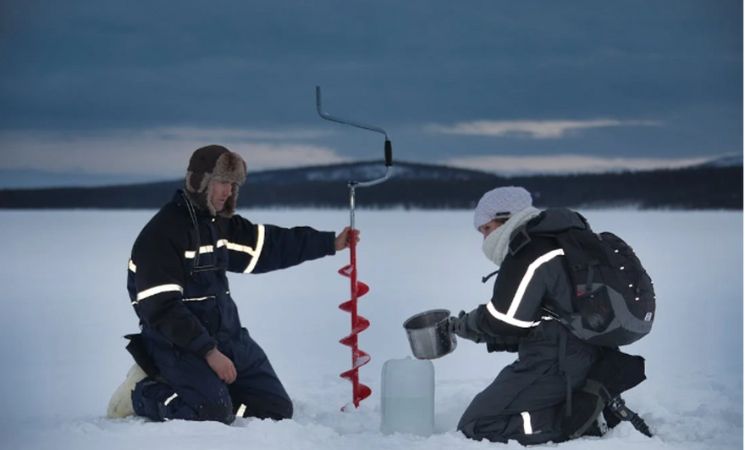Each year, the planet loses an estimated 10 million hectares of forests, equivalent to about 27 football fields every minute[A1] . This staggering rate of destruction calls for more efficient and accurate tools to monitor and protect our ecosystems. Geographic Information Systems (GIS) have emerged as one of the most powerful technologies available for environmental monitoring and conservation.
From tracking wildlife populations to managing natural resources, GIS helps scientists, governments, and organizations gather real-time data to make informed decisions that protect the planet. In this article, we will explore how GIS is transforming the way we approach environmental conservation.
Understanding GIS: A Tool for Visualizing and Analyzing Data
Geographic Information Systems, or GIS, is a technology that allows users to capture, store, and analyze spatial and geographic data. It provides a way to visualize this data on digital maps, making it easier to understand patterns and changes over time.
In the context of environmental monitoring, GIS plays a crucial role in helping researchers and conservationists observe everything from deforestation to air quality. What sets GIS apart is its ability to integrate various types of data—whether it’s satellite imagery, on-the-ground reports, or sensor data—and present it in a way that offers valuable insights.
Protecting Wildlife Habitats and Migration Patterns Using GIS
Wildlife conservation is another critical area where GIS is making a significant impact. Many species around the world face threats to their habitats due to human encroachment, climate change, and deforestation.
GIS technology is used to monitor animal populations, track their migration routes, and identify changes in their habitats. By mapping these trends, conservationists can take steps to protect key habitats and establish corridors for safe animal migration.
Professionals with expertise in Geographic Information Science (GIScience), especially those who have pursued online GIS masters programs, are often at the forefront of these efforts. They leverage their technical knowledge to manage complex datasets and make critical decisions that guide conservation policies and actions.
Monitoring Environmental Changes in Real-Time with GIS
One of the most significant advantages of GIS in environmental monitoring is its ability to provide real-time data. With GIS, it is possible to track natural changes and human activities as they happen. This is especially useful for monitoring large-scale environmental issues, such as deforestation, urban sprawl, and water pollution, which require constant oversight. For example, satellites equipped with GIS can scan and update maps showing how quickly forest cover is diminishing or where illegal logging activities might be taking place.
Because of the real-time capabilities of GIS, policymakers and environmental organizations are better equipped to react to changes and put plans into place that can mitigate damage. Instead of relying on outdated reports, stakeholders have access to the most current information, making it easier to prioritize areas for immediate action.
Combatting Deforestation with GIS Mapping Tools
Deforestation is one of the most pressing environmental challenges we face today. Vast stretches of forest are being cleared for agriculture, mining, and urban development, often at an unsustainable rate. GIS mapping tools have become indispensable for tracking deforestation in real time, enabling environmentalists to visualize the rate of forest loss over weeks, months, and years.
With satellite imagery and GIS data, conservationists can identify high-risk zones where deforestation is rampant, giving them the ability to focus resources and enforcement efforts where they are most needed. GIS doesn’t just help track deforestation—it also aids in reforestation efforts, allowing organizations to monitor the success of replanting programs.
Managing Water Resources and Conservation Efforts with GIS
Water is one of the planet’s most valuable resources, and managing it efficiently is crucial for both human populations and ecosystems. GIS has emerged as a vital tool in water conservation efforts, allowing environmental professionals to track water usage, map watersheds, and monitor pollution sources.
Whether it’s agricultural runoff polluting rivers or droughts depleting reservoirs, GIS provides an in-depth look at how water resources are being affected and helps to forecast future trends.
By using GIS data, communities can make informed decisions about water conservation, implementing strategies that ensure water resources are managed sustainably. This level of precision is essential for addressing the growing water scarcity issue that many regions face today.
Using GIS to Monitor and Respond to Climate Change Impacts
Climate change is one of the most critical issues of our time, and GIS plays a pivotal role in understanding and responding to its effects. GIS tools allow scientists and policymakers to monitor a wide range of climate-related data, including temperature changes, sea-level rise, and shifts in weather patterns. By mapping out this data, GIS helps predict how climate change will impact different regions and ecosystems in the future.
For instance, coastal areas at risk of flooding due to rising sea levels can be identified early using GIS models, enabling communities to plan and implement protective measures. Similarly, GIS helps monitor the melting of polar ice caps, which contributes to rising sea levels. By visualizing these trends, GIS helps governments and organizations focus their efforts on areas that are most vulnerable to the effects of climate change, enabling more targeted and effective intervention strategies.
Enhancing Natural Disaster Preparedness with GIS Technology
Natural disasters such as hurricanes, wildfires, and floods can cause significant environmental damage and pose serious risks to human lives. GIS technology is instrumental in disaster preparedness and response. By mapping high-risk areas, GIS allows authorities to prepare for potential disasters and improve response strategies when they occur.
For example, GIS is used to map flood-prone areas, allowing city planners to create better drainage systems and implement flood control measures. During wildfires, GIS can help firefighters track the spread of the blaze in real time, allowing for quicker and more effective containment.
This technology also assists in post-disaster recovery efforts by providing accurate damage assessments, helping communities rebuild more efficiently. The ability to visualize disaster impacts and predict potential risks before they occur makes GIS a valuable tool in safeguarding both the environment and human populations.
GIS has proven to be a game-changing tool in the field of environmental monitoring and conservation. Its ability to visualize, analyze, and interpret geographic data enables professionals to make more informed decisions about how to protect natural resources and ecosystems. From tracking deforestation and wildlife populations to preparing for natural disasters and responding to climate change, GIS provides essential insights that are critical for safeguarding the environment.
As the technology continues to evolve and become more widely accessible, its role in conservation will only grow. By integrating GIS with other emerging technologies such as AI, we can further enhance our ability to monitor and respond to environmental challenges. Ultimately, GIS empowers us to take a proactive approach to conservation, ensuring that we protect the planet for future generations.













